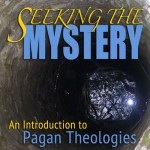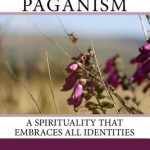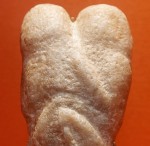As promised, an excerpt from Seeking the Mystery: An Introduction to Pagan Theologies, now available in both e-book and paperback editions.
Excerpt from Chapter Two: Myth, Tradition, and Innovation
The foundation of contemporary Pagan theology is myth.
Given the colloquial use of the word “myth,” this statement may sound a bit strange. In Western culture, “myth” often means “a prevalent belief that isn’t true” (as in the popular television show Mythbusters, which tests common beliefs about the world with the scientific method). We also commonly speak of “mythology” when referring to stories of the goddesses, gods, and heroes of ancient cultures. This usage comes closer to the way “myth” is understood in contemporary Paganism, but it’s still somewhat off the mark. In mainstream society, myths are often taught as the quaint productions of premodern civilizations, with the understanding that if myths are still told in a modern context, they are preserved as part of cultural or ethnic heritage or, at most, because they convey important psychological truths. Contemporary Paganism, on the other hand, takes myths seriously as sacred stories that express values and suggest modes of behavior.
Some Pagans agree with comparative religion scholar Joseph Campbell, who presented myths as guiding individuals through stages of life and expressing truths that are universal to the human condition. Others experience myths as offering access to numinous powers and beings with whom seekers can develop relationships. Although myths may appear to refer to a time in the distant past, they are often better understood as occurring in an eternal present, sometimes repeating over and over as part of a recurring cycle (for example, the Wiccan seasonal cycle known as the “Wheel of the Year”). Pagans often look to the myths of pre-Christian religious traditions (such as stories of Greek, Egyptian, Celtic, and Norse deities) and to those of living indigenous traditions for inspiration. Such traditions are often seen as having a more authentic connection to the earth, a particular piece of land, a people, or the divine. Other Pagans approach the religious myths of their childhood from a Pagan perspective, or create new sacred tales that, over time, begin to function as myths in their communities.
Pagans delight in narrative in general, and a story need not be old or from a foreign country to offer spiritual inspiration. When American religion scholar Sarah Pike studied Pagan festivals, she found that many Pagans located the beginnings of their spirituality in the fantasy or science fiction that they first read as children or young adults.[i] Speculative fiction of this kind tends to be idea-driven and to offer modes of behavior and relationship that are different from the mainstream. Fiction allows Pagans to imagine alternatives ways of relating to the land, to the divine, and to each other. One significant contemporary Pagan group, the Church of All Worlds, took its name directly from Stranger in a Strange Land, an influential science fiction novel by Robert Heinlein. The group’s emphasis on close personal bonding and sexual freedom reflects the values of the fictional religion that Heinlein imagined. In turn, the real-life Church of All Worlds has advocated for those values through the magazine Green Egg, which had a huge impact on the infant American Pagan movement of the 1970s.[ii] Pagans have also used fiction to spread their beliefs and practices throughout the Pagan community and beyond. Starhawk’s novel The Fifth Sacred Thing, for example, presents many of the practices of her real-life Reclaiming community as part of a futuristic dystopian narrative.
Narrative plays an important role in many of the world’s religions. Among Jews, the story of the Exodus is retold yearly at Passover as they imagine an era of peace and justice and a return to Jerusalem. Buddhists use jataka tales—stories of the Buddha’s many lives—to teach morality, as do Christians with stories of Jesus, the apostles, or the saints. Similarly, Native American stories of ancestors and animal spirits teach tribal values and traditions, as well as orienting listeners to the land on which they live. Pagans differ somewhat from these other religions in that they usually do not limit themselves to a single body of literature or tradition. There are some exceptions to this, particularly among those reconstructing ancient religions from historical texts and archeological study, but the majority of Pagans are at least somewhat eclectic. This tendency reflects Pagans’ emphasis on having a religious practice that feels personally meaningful, as well as their resistance to anything that smacks of dogmatism. The meaning of sacred stories is never fully fixed; story requires interpretation. Individual practitioners are often encouraged to feel out the meaning of a myth for themselves, and to seek the experiential truth—the mystery—at the heart of the tale.
Not all Pagans feel comfortable picking and choosing from many cultures, however. Some self-impose restrictions on their choice of material, feeling that completely unrestricted eclecticism lacks sufficient structure. To attempt to deepen their connection to a particular place, culture, deity, or group, Pagans will sometimes limit themselves to working with the myths of a single culture or the liturgical materials of a single Pagan tradition. Others are concerned with cultural appropriation, and they disapprove of taking stories and practices from other cultures out of their intended context. In those cases, Pagans may focus their work on the religious traditions of their ancestors, or on the traditions of communities with whom they have a meaningful relationship. Special care must be taken when approaching indigenous or minority religious communities who have been historically oppressed and may still be experiencing economic, social, and legal disadvantages. For example, because of the genocidal history between Native Americans and white settlers, non-Native Pagans seeking training in Native religion must be sensitive to the concerns of traditional practitioners. While a sincere seeker who wants to contribute to the well-being of Native communities may be tentatively welcomed, some Native American peoples see whites as commodifying their spirituality and attempting to strip-mine their religion for exotic tidbits. Pagans seeking to become part of Native communities must first develop a basis for mutual trust.
Pagans employ myths in both collective and individual contexts. Myths form the basis of many group rituals. In Wicca, for example, practitioners celebrate the Wheel of the Year, which links the story of the dying and rising God and the Goddess who appears as Maiden, Mother, and Crone into the seasonal cycle. Birth, death, and fertility are celebrated in response to the waxing and waning sun and the cycle of planting, growth, harvest, and fallowness. Some groups put on ritual dramas to tell the seasonally linked tales of the gods, such as the myth of Persephone. In this myth, the seasons are related to the grief and celebration of Persephone’s mother Demeter. Demeter allows the earth to grow when Persephone returns from the underworld each year, but grieves and blights the land when her daughter descends to her husband Hades, lord of the dead. Such rituals help to connect participants with larger natural forces or with the gods themselves.
Individuals may also use myths to define their identities, create meaning around life events, or recover from trauma. Feminist Paganism has often used goddess myths for personal empowerment; women and men are encouraged to bring the virtues of various goddesses into their lives by telling their stories, honoring them in worship, and imitating their strengths. A woman seeking to become more independent in her life, for instance, might build an altar to Diana or Artemis and take up archery as a hobby while also applying for a promotion at her job.
Myths can also help individuals to turn adversity or trauma into spiritual growth. The popular myth of Inanna—another story of descent to the underworld—tells the harrowing tale of the goddess’s journey below, where she is systematically stripped of her symbols of power, then slain and hung as a naked corpse by her dark sister, Ereshkigal. But Inanna has planned ahead for the risky journey, and after three days and nights, her allies bargain with Ereshkigal, recover Inanna’s body, and return her to life. Inanna must send another to the underworld in her place, however. When she returns to the surface and finds that her husband Dumuzi is not mourning her death, she chooses him to replace her in the land of the dead.
Many individuals have used the myth of Inanna to deal with experiences of trauma, particularly trauma that resulted from voluntary actions. Ereshkigal is sometimes experienced as a stern taskmaster who oversees an ultimately transformative ordeal, and parallels can be drawn between Inanna’s resurrection and that of Jesus. Unlike in the Christian tradition, where scriptural stories are often read for ethical lessons, Pagans read myths as offering spiritual insight, not directly prescribing behavior. In the myth of Inanna, it is possible to read Inanna’s punishment of Dumuzi as “rightful revenge.” But contemporary Pagans may instead see it as a warning not to lash out against loved ones who do not understand the ordeal they have undergone. Common Pagan interpretations of the myth also include the transformative potential of vulnerability and the greater strength that can be built from having survived powerlessness.[iii]
Although Pagans do sometimes imitate their gods, as in the example of a woman devoting herself to Artemis in her quest for independence, gods are usually held up as exemplars of specific virtues rather than paragons of ethical behavior. As scholar Graham Harvey remarks about contemporary Heathenry, “Northern religion, Paganism, and other polytheistic traditions in general find meaning and value in the diverse ordinary lives of human beings. The deities introduce us to ourselves and do not only demand allegiance and worship” [my emphasis].[iv] Relationships with deity lead practitioners into deeper relationship with their humanity, rather than with a transcendent moral law. Although there is a certain amount of playful mockery around the issue of the gods and their ethics (for example, the bumper sticker “WWTD: What Would Thor Do?”), the gods are thought to hold great but context-specific wisdom. The fact that most Pagans honor multiple gods (either as individual personalities, or as aspects of a God/dess or a Goddess and a God) is consistent with contemporary Pagan virtue ethics, which stresses the cultivation of many virtues in a harmonious balance. A devotee of the Greek gods might honor Aphrodite as a goddess of beauty and sexual love, but Aphrodite lacks the virtues of fidelity and constancy. For a successful marriage or a harmonious household, Pagans might turn to Hera, who presides over weddings, or Hestia, goddess of the hearth. Even the ancient Greeks were sometimes critical of their gods, who could be petty and capricious; yet the imperfect gods still had their devotees, and their worship was at the center of a stable culture for hundreds of years. Contemporary Pagans seek to learn spiritual lessons from their myths, while nevertheless employing the sophisticated ethical thinking of Western philosophy. Some might even assert that human ethics—ethics that grow from being embodied and finite on the earth—are one of the gifts that Pagans offer back to their gods, whose perspective is not bound by a human sense of space or time.
[i] Sarah M. Pike, Earthly Bodies, Magical Selves: Contemporary Pagans and the Search for Community (Berkeley: University of California Press, 2001), 169–70.
[ii] See Chas Clifton, Her Hidden Children: The Rise of Wicca and Paganism in America (Lanham, MD: AltaMira Press, 2006).
[iii] See Janet Munin, ed., Queen of the Great Below: An Anthology in Honor of Erishkegal (Biblioteca Alexandrina, 2010).
[iv] Graham Harvey, “Heathenism: A North European Pagan Tradition,” Paganism Today, ed. Graham Harvey and Charlotte Hardman (London: Thorsons, 1996) 51.











